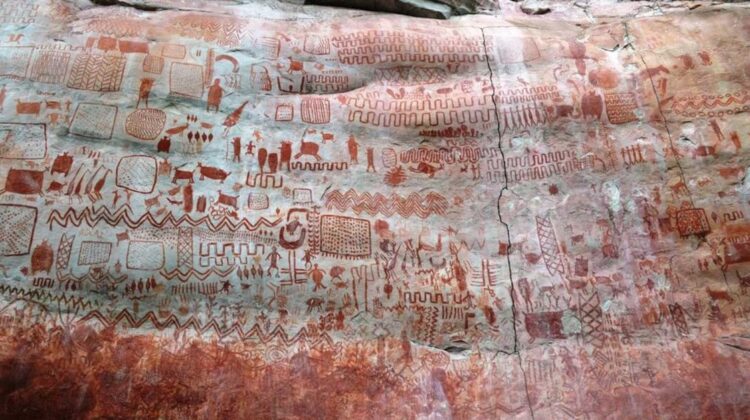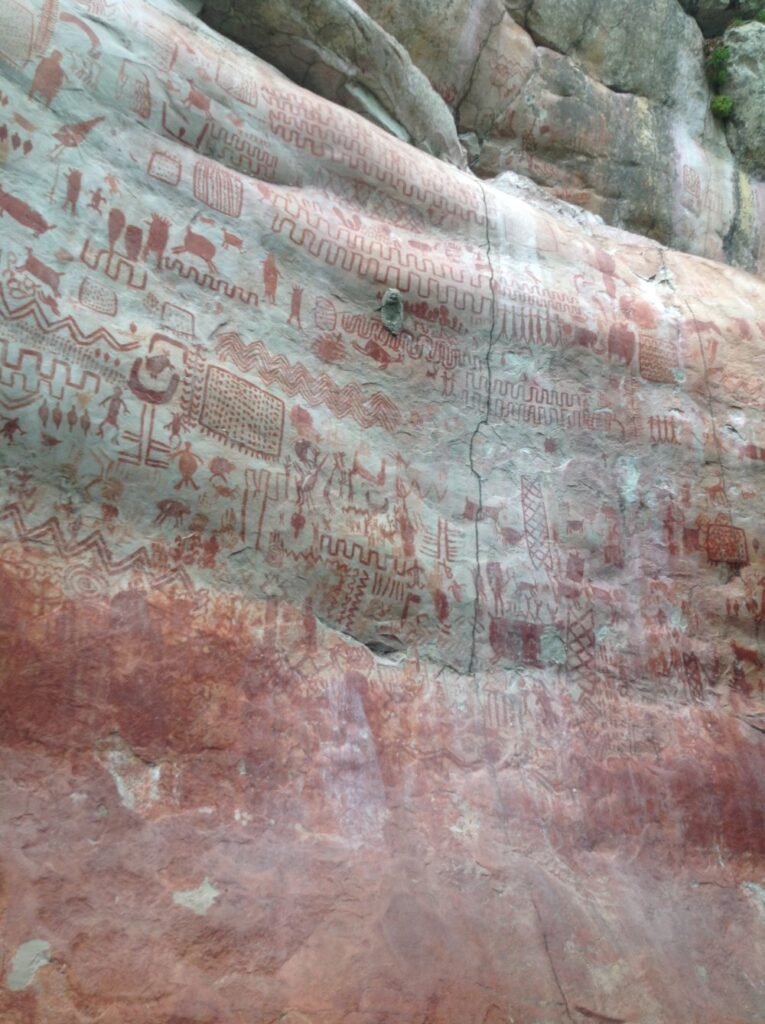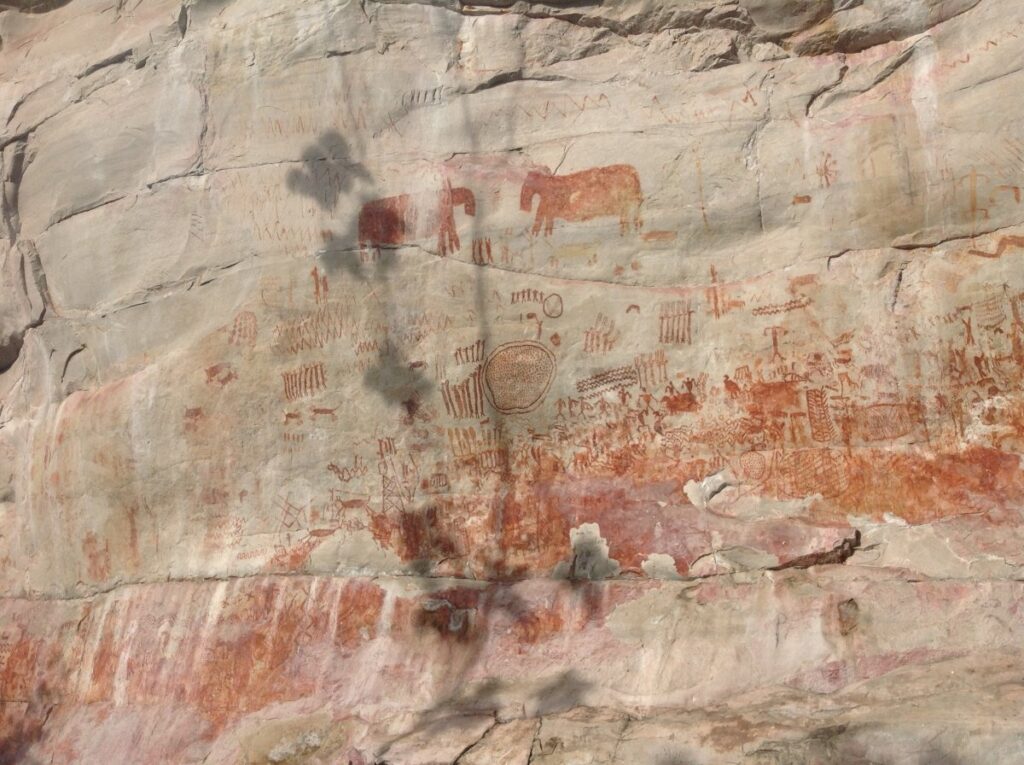
In the depths of the dense Amazon rainforest, a hidden masterpiece of ancient artistry has come to light, shedding light on the mysteries of prehistoric life. Dubbed the “Sistine Chapel of the Ancients,” this extraordinary discovery unveils an awe-inspiring gallery of ice age rock paintings, etched onto an expansive “canvas” that stretches for over 8 miles.

Nestled within the lush landscapes of modern-day Colombia, these remarkable drawings capture the essence of a bygone era, transporting us back in time to a world inhabited by colossal creatures such as giant sloths and mastodons. Crafted using ochre – a vivid red natural clay pigment employed as a paint in antiquity – these intricate depictions adorn the hills above three rock shelters within the Serranía de la Lindosa.

Astonishingly, these prehistoric artworks, etched meticulously upon the rock, date back to a span between 11,800 and 12,600 years ago – a period of profound climatic shifts as the Earth emerged from the clutches of the Ice Age. Discovered by a collaborative effort of British and Colombian archaeologists in 2017, the “Sistine Chapel of the Ancients” has only recently been unveiled to the public, offering a glimpse into a distant past and the lives of early inhabitants of the Amazon.

Mark Robinson, a co-researcher and archaeologist at the University of Exeter, lauds the images as a testament to the creativity and culture of the earliest dwellers of western Amazonia. These meticulous artworks, sprawling across the rock shelters, portray a myriad of scenes, from the diverse flora and fauna of the region to the extinct giants that once roamed its landscapes.
To uncover these breathtaking depictions, a dedicated team overcame considerable challenges. Negotiations with the Colombian government and navigating the terrain under the watchful eye of unaligned rebel forces were prerequisites for their mission. The journey itself required a five-hour trek to reach the remote site, a testament to their dedication and determination.

What strikes observers most is not only the number of paintings, potentially numbering in the tens of thousands, but also the complexity of scenes depicted. Among the various illustrations are portrayals of prehistoric humans amidst the abundant wildlife of the Amazon, capturing moments of hunting, dancing, and enigmatic rituals. The ancient artists even dared to capture daring feats, with humans seemingly suspended or leaping from wooden towers, possibly revealing insights into their methods of reaching the cliff walls for painting.

As the narrative of these ice age paintings unfolds, it offers a snapshot of a world in flux, a world on the cusp of transformation as temperatures rose and the Amazon evolved from a patchwork of landscapes into the lush rainforest we know today. These rock shelters, excavated in the aftermath of a 2016 peace treaty, stand as early human-occupied sites in the Amazon, offering valuable insights into the diet and activities of our ancient ancestors.

Ella Al-Shamahi, an archaeologist and explorer who experienced the majesty of the site firsthand, reflects on the impact of these discoveries. She notes that the presence of ice age megafauna within the artwork serves as a marker of time, revealing a reality of the Amazon drastically different from the familiar rainforest of today.

Intriguingly, the art provides a window into how communities adapted and interacted with their environment, revealing glimpses of their daily lives, hunting practices, and the profound connection they shared with the natural world.
As the world grapples with the challenges of the present, this astonishing “Sistine Chapel of the Ancients” stands as a reminder of the resilience and creativity that have long been the hallmarks of humanity. Though research on this site is temporarily paused due to the pandemic, the team remains optimistic that the verdant veil of the rainforest may yet conceal more prehistoric treasures awaiting discovery.

Wonderful!